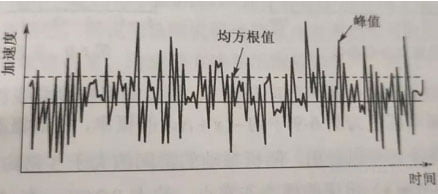Vibration resistance and impact resistance of products are important indicators to measure product quality. A product’s ability to adapt to the environment and reliability, both from its design, but also from the results of actual test verification.
The design provides an inherent basis for environmental adaptability and reliability. However, the actual test verification process is the key to perfect the design and find the defects of the production process. Only through these tests can we fully assess whether the product meets the performance indicators required by the contract.
In this paper, we briefly introduce the random vibration resistance test.
Most of the vibration encountered in the process of transportation and use of products are random vibration properties. For example, the vibration suffered by astronauts and missiles at the launch stage, the vibration caused by vehicles driving on rough roads, and the vibration of ships in wind and waves are typical random vibration phenomena.
Therefore, only the use of sinusoidal vibration test is not enough, it is necessary to use random vibration resistance testing to reflect the seismic performance of the product more truly. In random vibration test, because the characteristics of vibration are irregular and cannot be accurately repeated, it can never be described by a simple periodic function. A typical wideband random vibration time history, as shown in Figure 1, has an amplitude, frequency, and phase that is unpredictable at any given moment.

Influence mechanism: Compared with sinusoidal vibration, random vibration has a wide frequency domain and a continuous spectrum, which can stimulate the product at all frequencies at the same time, and the interaction of various frequencies is far harsher, more real and more effective than using sinusoidal vibration only for some frequencies or continuous sweep frequency to simulate the impact of the above vibration. In addition, it is simpler and better to use random vibration to study the dynamic characteristics of products and the transfer function of structures than sinusoidal vibration.
Failure mode: Random vibration and sinusoidal vibration can cause wire friction, fastener loosening, movable parts stuck, thereby destroying the connection, installation and fixing of the product. When the stress caused by random vibration excitation is too large, the structure will crack and fracture, especially in the resonance state. Long time random vibration, due to the cumulative damage caused by alternating stress, will cause fatigue failure of the structure. Random vibration can also lead to poor contact, live components contact each other or short circuit, solder joint off, wire breakage, and produce strong electrical noise, so as to affect the normal work of the product, the product performance decline, failure or even failure.
As a well-known manufacturer of electromagnetic vibration table in China,JOEO has a complete product line covering the range of vibration loads from 1KN to 600KN, which can meet the customer’s product verification needs in various mechanical environments. Our professional team can customize various vibration test programs for customers, including sinusoidal vibration, random vibration, shock, collision, etc., to fully cover the mechanical load that products may encounter in transportation, use and other links. If you need to know our other vibration resistance test methods, please feel free to contact our expert team, we will meet your needs with the best quality solutions.
